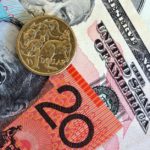On Friday (in GMT terms) gold for delivery in December traded within the range of $1,338.3-$1,362.5. Futures closed at $1,343.2, edging down 0.50% compared to Thursday’s close. It has been the 166th drop in the past 315 trading days and also a second consecutive one. The daily low has been the lowest level since August 9th, when a low of $1,336.0 a troy ounce was recorded. In weekly terms, the yellow metal lost 0.09% of its value during the past week. It has been the 15th drop in the past 32 weeks and also a second consecutive one. The commodity has increased its slump to 1.05% so far in August, after surging 2.86% in July.
On the Comex division of the New York Mercantile Exchange, gold futures for delivery in December were edging up 0.16% on Monday to trade at $1,345.4 per troy ounce. The precious metal went up as high as $1,347.5 during early European trade, while the current daily low was at $1,341.6 per troy ounce, recorded during the early phase of the Asian trading session.
The US Dollar Index, a gauge reflecting the relative strength of the greenback against a basket of 6 other major currencies, was inching down 0.09% on the day at a level of 95.59, after going down as low as 95.56 earlier. The gauge has pared its advance to 0.12% so far during the current month, following a 0.74% retreat in July.
Fridays string of macroeconomic data, which came out of the United States, seemed to have pushed back expectations of an early rate hike by the Federal Reserve Bank. The US Census Bureau said retail sales in the country remained flat in July from a month ago, following a revised up 0.8% gain in June. Market expectations pointed to a 0.4% surge. At the same time, the University of Michigans preliminary consumer sentiment index for the United States was reported at a level of 90.4 in August, improving from a final 90.0 in July, while disappointing expectations of a larger increase (to 91.5).
According to CME’s FedWatch Tool, as of August 12th, market players saw a 9.0% chance of a rate hike occurring at the Federal Reserve’s policy meeting in September, down from 12.0% in the prior business day, and a 10.9% chance of a hike in November, down from 15.6% during the preceding day. As far as the December meeting is concerned, the probability of such a move was seen at 44.9% on August 12th, down from 51.9% in the preceding business day. A prolonged low-rate environment tends to support demand for haven assets such as gold.
Meanwhile, silver futures for delivery in September were gaining 0.71% on the day to trade at $19.843 per troy ounce, after going up as high as $19.890 a troy ounce during the early phase of the European trading session. Last week the commodity lost 0.58% of its value, while being down 3.17% so far during the month.
Daily, Weekly and Monthly Pivot Levels
By employing the Camarilla calculation method, the daily levels of importance for gold are presented as follows:
R1 – $1,345.4
R2 – $1,347.6
R3 (Range Resistance – Sell) – $1,349.9
R4 (Long Breakout) – $1,356.5
R5 (Breakout Target 1) – $1,364.3
R6 (Breakout Target 2) – $1,367.5
S1 – $1,341.0
S2 – $1,338.8
S3 (Range Support – Buy) – $1,336.5
S4 (Short Breakout) – $1,329.9
S5 (Breakout Target 1) – $1,322.1
S6 (Breakout Target 2) – $1,318.9
By using the traditional method of calculation, the weekly levels of importance for gold are presented as follows:
Central Pivot Point – $1,347.4
R1 – $1,359.4
R2 – $1,375.7
R3 – $1,387.7
R4 – $1,399.8
S1 – $1,331.1
S2 – $1,319.1
S3 – $1,302.8
S4 – $1,286.6
In monthly terms, for the yellow metal we have the following pivots:
Central Pivot Point – $1,348.5
R1 – $1,386.5
R2 – $1,415.4
R3 – $1,453.4
R4 – $1,491.4
S1 – $1,319.5
S2 – $1,281.5
S3 – $1,252.6
S4 – $1,223.6





